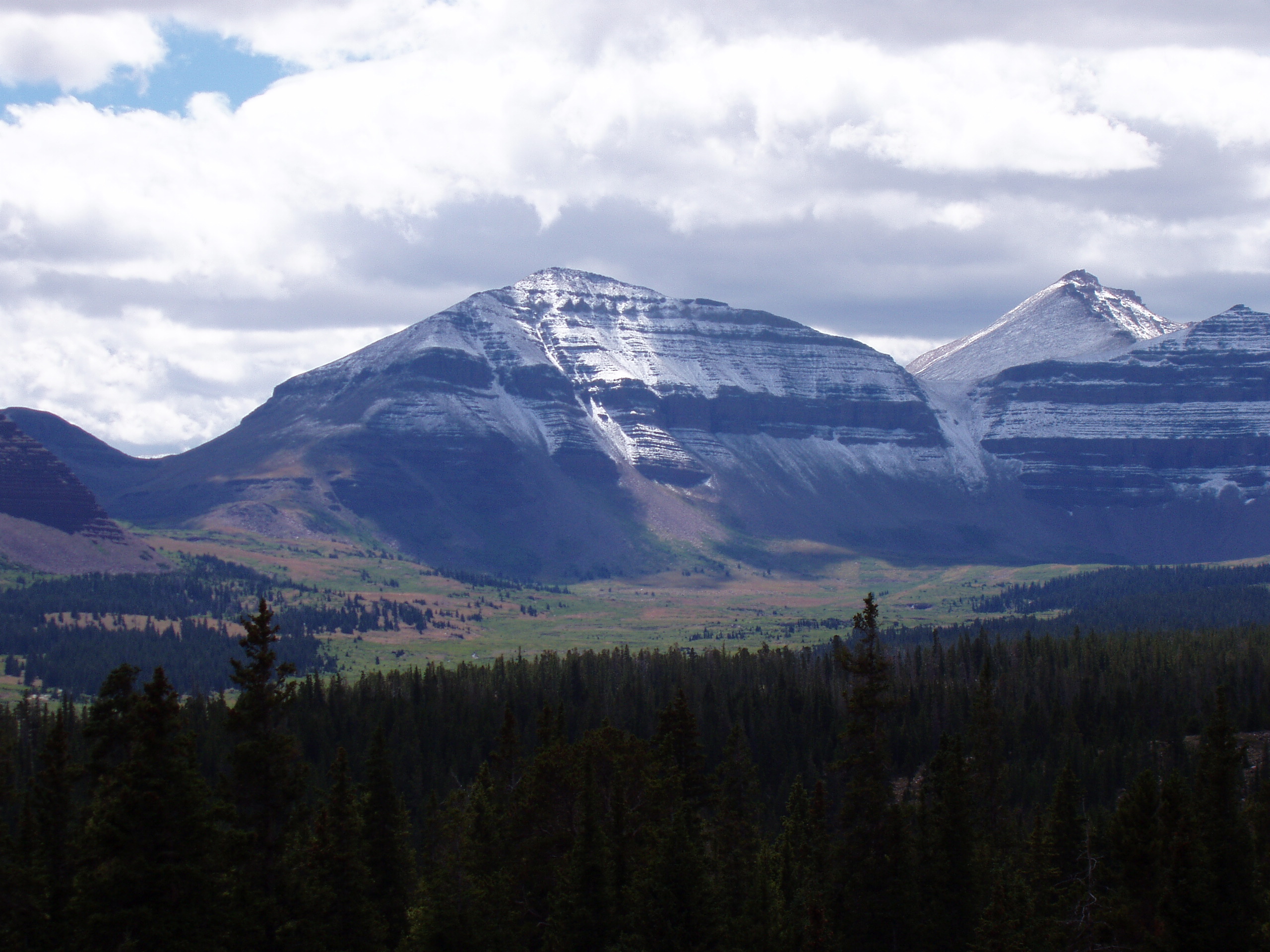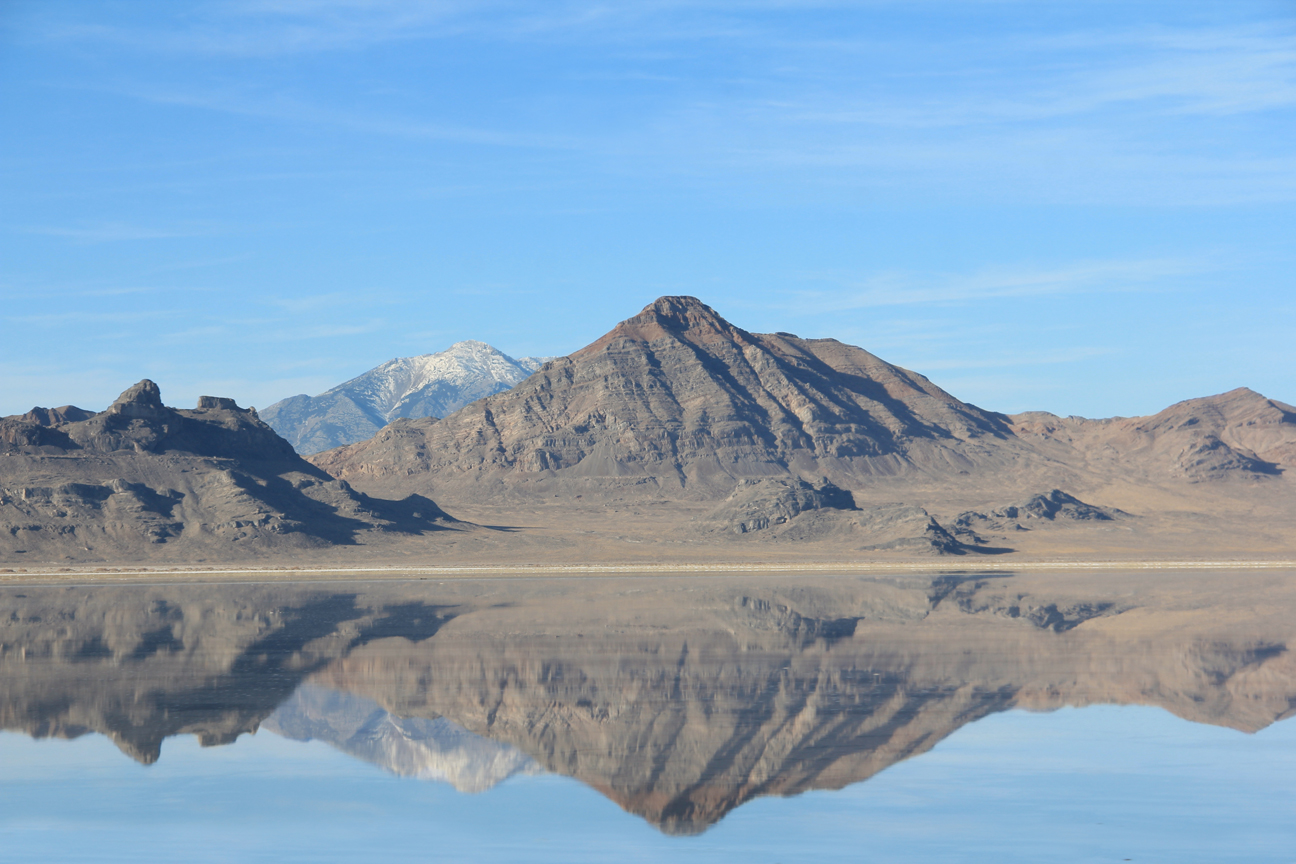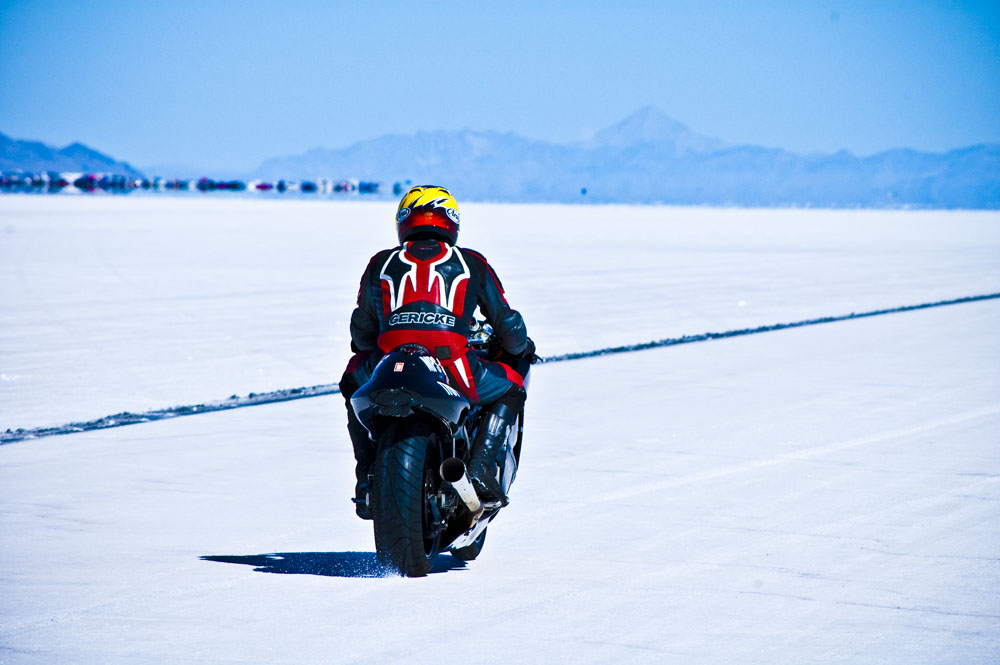|
Jenkins Peak
Jenkins Peak is a mountain summit located in Tooele County, Utah, United States. Description Jenkins Peak is the third-highest summit in the Silver Island Mountains which are a subset of the Great Basin Ranges. It is set on land controlled by the Bureau of Land Management. The community of Wendover, Utah, is 17 miles to the southwest and the Bonneville Speedway is eight miles to the south. Topographic relief is significant as the summit rises over above the Bonneville Salt Flats in two miles. This landform's toponym was officially adopted in 1960 by the U.S. Board on Geographic Names to honor David Abbott "Ab" Jenkins (1883–1956), a professional race car driver who was interested in land speed records at the Bonneville Salt Flats.Madeleine Osberger, Steve Cohen (1996), ''Adventure Guide to Utah'', Hunter Pub., , p. 47United States Board on Geographic Names (1960), ''Decisions on Names in the United States, Puerto Rico and the Virgin Islands, Decision List 6001'', Depa ... [...More Info...] [...Related Items...] OR: [Wikipedia] [Google] [Baidu] |
Ab Jenkins
David Abbott "Ab" Jenkins (January 25, 1883 – August 9, 1956) was the 24th mayor of Salt Lake City, Utah between 1940 to 1944. He was a professional race car driver. Jenkins' interest in motorsports began with racing motorcycles on dirt tracks and across country. He then became interested in land speed records at the Bonneville Salt Flats. He was instrumental in establishing Bonneville as a location for such events, and in attracting overseas drivers such as George Eyston and Sir Malcolm Campbell to compete there. He drove the Duesenberg " Mormon Meteor" to a 24-hour average land speed record of in 1935. In 1940 Jenkins set the 24-hour record of a average that lasted for 50 years (until 1990). He died on a visit to Milwaukee, Wisconsin.''Oregonian'', August 11, 1956, Page 15. Safety record Often referred to as "The World's Safest Speedster," Jenkins was the father of salt racing. The amount of miles he drove in 50 years included nearly three million kilometers, which incl ... [...More Info...] [...Related Items...] OR: [Wikipedia] [Google] [Baidu] |
Wendover, Utah
Wendover is a city on the western edge of Tooele County, Utah, United States. The population was 1,115 at the 2020 census. Description Wendover is on the western border of Utah and is contiguous with West Wendover, Nevada. Interstate 80 runs just north of both cities, while Interstate 80 Business (Wendover Boulevard) runs through the two cities. The Wendover Cut-off was the former path of the Victory Highway as well as U.S. Route 40 to Wendover. Today it serves as a frontage road between Wendover and Knolls just to the south of the Interstate. History The town was established in 1908 as a station stop on the Western Pacific Railroad, then under construction. The transcontinental telephone line was completed as workers raised the final pole at Wendover, Utah on June 27, 1914, after construction of of telephone line. However, the line was not utilized until January 25, 1915, when the first transcontinental telephone call was made to coincide with the opening of the Panama ... [...More Info...] [...Related Items...] OR: [Wikipedia] [Google] [Baidu] |
Mountains Of Tooele County, Utah
A mountain is an elevated portion of the Earth's crust, generally with steep sides that show significant exposed bedrock. Although definitions vary, a mountain may differ from a plateau in having a limited summit area, and is usually higher than a hill, typically rising at least 300 metres (1,000 feet) above the surrounding land. A few mountains are isolated summits, but most occur in mountain ranges. Mountains are formed through tectonic forces, erosion, or volcanism, which act on time scales of up to tens of millions of years. Once mountain building ceases, mountains are slowly leveled through the action of weathering, through slumping and other forms of mass wasting, as well as through erosion by rivers and glaciers. High elevations on mountains produce colder climates than at sea level at similar latitude. These colder climates strongly affect the ecosystems of mountains: different elevations have different plants and animals. Because of the less hospitable terrain and ... [...More Info...] [...Related Items...] OR: [Wikipedia] [Google] [Baidu] |
List Of Mountain Peaks Of Utah
This article comprises three sortable tables of major mountain peaksThis article defines a significant summit as a summit with at least of topographic prominence, and a major summit as a summit with at least of topographic prominence. All summits in this article have at least 500 meters of topographic prominence. An ultra-prominent summit is a summit with at least of topographic prominence. of the U.S. State of Utah. The summit of a mountain or hill may be measured in three principal ways: #The topographic elevation of a summit measures the height of the summit above a geodetic sea level.All elevations in this article include an elevation adjustment from the National Geodetic Vertical Datum of 1929 (NGVD 29) to the North American Vertical Datum of 1988 (NAVD 88). For further information, please see this United States National Geodetic Surveybr>noteIf the elevation or prominence of a summit is calculated as a range of values, the arithmetic mean is shown. The fir ... [...More Info...] [...Related Items...] OR: [Wikipedia] [Google] [Baidu] |
Cobb Peak (Utah)
Cobb Peak is a mountain summit located in Tooele County, Utah, United States. Description Cobb Peak is the fourth-highest summit in the Silver Island Mountains which are a subset of the Great Basin Ranges. It is set on land administered by the Bureau of Land Management. The Bonneville Speedway is 12 miles to the southwest and line parent Graham Peak is three miles to the west. Topographic relief is significant as the summit rises above the Bonneville Salt Flats in two miles. This landform's toponym was officially adopted in 1960 by the U.S. Board on Geographic Names to honor John Cobb (1899–1952), an English racing driver who set three land speed records at the Bonneville Salt Flats, including a record 394 MPH on September 16, 1947.United States Board on Geographic Names (1960), ''Decisions on Names in the United States, Puerto Rico and the Virgin Islands, Decision List 6001'', Department of the Interior, p. 51Northey, Tom (1974), "Land Speed Record: The Fastest Men o ... [...More Info...] [...Related Items...] OR: [Wikipedia] [Google] [Baidu] |
Diurnal Temperature Variation
In meteorology, diurnal temperature variation is the variation between a high air temperature and a low temperature that occurs during the same day. Temperature lag Temperature lag is an important factor in diurnal temperature variation: peak daily temperature generally occurs ''after'' noon, as air keeps net absorbing heat even after noon, and similarly minimum daily temperature generally occurs substantially after midnight, indeed occurring during early morning in the hour around dawn, since heat is lost all night long. The analogous annual phenomenon is seasonal lag. As solar energy strikes the Earth's surface each morning, a shallow layer of air directly above the ground is heated by conduction. Heat exchange between this shallow layer of warm air and the cooler air above is very inefficient. On a warm summer's day, for example, air temperatures may vary by from just above the ground to waist height. Incoming solar radiation exceeds outgoing heat energy for many hours af ... [...More Info...] [...Related Items...] OR: [Wikipedia] [Google] [Baidu] |
Desert Climate
The desert climate or arid climate (in the Köppen climate classification ''BWh'' and ''BWk''), is a dry climate sub-type in which there is a severe excess of evaporation over precipitation. The typically bald, rocky, or sandy surfaces in desert climates are dry and hold little moisture, quickly evaporating the already little rainfall they receive. Covering 14.2% of earth's land area, hot deserts are the second most common type of climate on earth after the polar climate. There are two variations of a desert climate according to the Köppen climate classification: a hot desert climate (''BWh''), and a cold desert climate (''BWk''). To delineate "hot desert climates" from "cold desert climates", there are three widely used Isotherm (contour line), isotherms: most commonly a mean annual temperature of , or sometimes the coldest month's mean temperature of , so that a location with a ''BW'' type climate with the appropriate temperature above whichever isotherm is being used is classi ... [...More Info...] [...Related Items...] OR: [Wikipedia] [Google] [Baidu] |
Salt Lake City
Salt Lake City (often shortened to Salt Lake and abbreviated as SLC) is the capital and most populous city of Utah, United States. It is the seat of Salt Lake County, the most populous county in Utah. With a population of 200,133 in 2020, the city is the core of the Salt Lake City metropolitan area, which had a population of 1,257,936 at the 2020 census. Salt Lake City is further situated within a larger metropolis known as the Salt Lake City–Ogden–Provo Combined Statistical Area, a corridor of contiguous urban and suburban development stretched along a segment of the Wasatch Front, comprising a population of 2,746,164 (as of 2021 estimates), making it the 22nd largest in the nation. It is also the central core of the larger of only two major urban areas located within the Great Basin (the other being Reno, Nevada). Salt Lake City was founded July 24, 1847, by early pioneer settlers led by Brigham Young, who were seeking to escape persecution they had experienced whi ... [...More Info...] [...Related Items...] OR: [Wikipedia] [Google] [Baidu] |
Bonneville Salt Flats
The Bonneville Salt Flats are a densely packed salt pan in Tooele County in northwestern Utah. A remnant of the Pleistocene Lake Bonneville, it is the largest of many salt flats west of the Great Salt Lake. It is public land managed by the Bureau of Land Management and is known for land speed records at the Bonneville Speedway. Access to the Flats is open to the public. The Flats are about 12 miles (19 km) long and 5 miles (8 km) wide, with a crust almost 5 ft (1.5m) thick at the center and less than one inch (2.5 cm) towards the edges. It is estimated to hold 147 million tons of salt, approximately 90% of which is common table salt. History Geologist Grove Karl Gilbert named the area after Benjamin Bonneville, a U.S. Army officer who explored the Intermountain West in the 1830s. In 1907, Bill Rishel and two local businessmen tested the suitability of the salt for driving by taking a Pierce-Arrow onto its surface. A railway line across the Flats was completed in ... [...More Info...] [...Related Items...] OR: [Wikipedia] [Google] [Baidu] |
Topographic Relief
Terrain or relief (also topographical relief) involves the vertical and horizontal dimensions of land surface. The term bathymetry is used to describe underwater relief, while hypsometry studies terrain relative to sea level. The Latin word (the root of ''terrain'') means "earth." In physical geography, terrain is the lay of the land. This is usually expressed in terms of the elevation, slope, and orientation of terrain features. Terrain affects surface water flow and distribution. Over a large area, it can affect weather and climate patterns. Importance The understanding of terrain is critical for many reasons: * The terrain of a region largely determines its suitability for human settlement: flatter alluvial plains tend to have better farming soils than steeper, rockier uplands. * In terms of environmental quality, agriculture, hydrology and other interdisciplinary sciences; understanding the terrain of an area assists the understanding of watershed boundaries, ... [...More Info...] [...Related Items...] OR: [Wikipedia] [Google] [Baidu] |
Bonneville Speedway
Bonneville Speedway (also known as the Bonneville Salt Flats Race Track) is an area of the Bonneville Salt Flats northeast of Wendover, Utah, that is marked out for motor sports. It is particularly noted as the venue for numerous land speed records. The Bonneville Salt Flats Race Track is listed on the National Register of Historic Places. The salt flats were first used for motor sports in 1912, but did not become truly popular until the 1930s when Ab Jenkins and Sir Malcolm Campbell competed to set land speed records. A reduction of available racing surface and salt thickness has led to the cancellation of events at Bonneville, such as Speed Week in 2014 and 2015. Available racing surface is much reduced with just available instead of the courses traditionally used for Speed Week. Track layouts Historically, the speedway was marked out by the Utah Department of Transportation at the start of each summer. Originally, two tracks were prepared; a long straightaway for spe ... [...More Info...] [...Related Items...] OR: [Wikipedia] [Google] [Baidu] |








